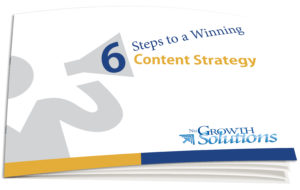[vc_row][vc_column][testimonial_slider]
[/testimonial_slider][vc_column_text]
“By failing to prepare, you are preparing to fail” – Benjamin Franklin
[/vc_column_text][vc_column_text]There are few people who would argue the truthfulness of the above statement. We all believe it – and most of us try to live it. But sometimes life gets in the way. Deadlines pile up, requests flow in and each day becomes an exercise in simply crossing as much off the to-do list as possible.
The most successful among us, however, are those who don’t fall prey to that trap. They are those that set objectives, highlight the steps it will take to achieve those objectives, and chip away at them until they get them done. They don’t let the urgent get in the way of the important.
While this applies in all walks of life, it is extremely relevant in the field of content marketing. There is so much that can be done, so many different ways to approach things, that it is very easy to be reactionary.
The stats, however, speak volumes.
According to the Content Marketing Institute’s 2016 Benchmarks, Budgets and Trends – North America report a documented content marketing strategy impacts effectiveness:
- 53% of the most effective marketers have a documented content marketing strategy
- 40% of the least effective marketers have no strategy at all.
Planning and strategy are worth every second of the time spent.
So let’s cut to the chase. If you want help defining a strategy, you’ve got it.
A few years ago we published Six Steps to a Winning Content Strategy as a way to ease the burden on busy marketers and overworked executives without the time to start from scratch. While the basics remain consistent nothing stands still when it comes to digital marketing, so we felt it was time for an update.[/vc_column_text][vc_column_text el_class=”call-out”] Check out our new and improved guide for insight on:
Check out our new and improved guide for insight on:
- Goal setting
- Understanding your buyer
- Identifying content themes
- Mapping your content to the buy cycle
- And more.
Read the eGuide [/vc_column_text][vc_column_text]Quick side note: It’s important to note that putting a strategy on paper does NOT mean you cannot pivot if the plan you create is not bearing fruit. But if you don’t have a strategy with documented goals and objectives it’s tough to pinpoint what’s working and what’s not.
[/vc_column_text][/vc_column][/vc_row]
